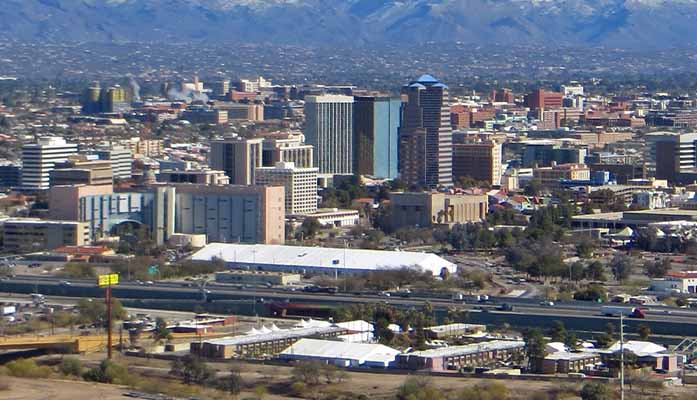By Corinne Murdock |
Tucson has received nearly $71.5 million to cover progressive housing and emissions initiatives.
Around $50 million will go into housing, and $21.5 million will go into emissions reduction and elimination.
The city received $50 million out of a total $370 million awarded to eight communities by the Department of Housing and Urban Development (HUD) Choice Neighborhoods Implementation (CNI) initiative.
Tucson received the higher reward of $50 million alongside Birmingham, Alabama; Pittsburgh, Pennsylvania; Philadelphia, Pennsylvania; and Wilmington, Delaware. The remaining three recipients — Atlanta, Georgia; Lake Charles, Louisiana; Miami-Dade County, Florida — received $40 million.
Tucson’s $50 million will only partially cover the 550 new or rehabilitated housing units planned by the city— the city disclosed that it required $334 million more from public, private, and nonprofit benefactors to complete its plan.
408 of the 550 units concern the city’s 17-story public housing facility, Tucson House. The remainder will be established across three new developments.
The 550 units are part of the Transformation Plan of the Thrive in the ‘05 initiative: a 2.3 square mile area marked by Oracle Road and Miracle Mile. Tucson Mayor Regina Romero and the Tucson City Council adopted the plan last year.
HUD CNI is a progression of former President Barack Obama’s original Choice Neighborhoods program. The Obama administration sought to disrupt the consolidation of crime and poverty prevalent in purely public and HUD-assisted housing by engineering mixed-income neighborhoods: a mixture of either market-rate and welfare-discounted housing, or entirely welfare-discounted housing. The program also focuses on establishing other amenities, such as schools and businesses, to improve those areas.
In addition to the CNI, Tucson’s initiative includes the Community Based Crime Reduction (CBCR), an effort to increase reliance on community-based policing led by Nadia Roubicek with the Arizona State University (ASU) Office of Community Health Engagement and Resiliency (OCHER). CBCR was established through the Department of Justice (DOJ) Bureau of Justice Assistance (BJA) Innovation Suite (also called the Smart Suite).
There’s also the Workforce & Economic Development, a partnership with the City of Tucson Economic Initiatives and Pima Community College, which provides employment and business resources and opportunities.
The fourth focus of Thrive in ‘05 — Tucson Community Access, Referral, Education, and Service (CARES) — offers residents medical and behavioral health care liaisons.
In addition to the $50 million for government housing, the city also received nearly $21.5 million from the Department of Transportation’s Federal Transit Administration to decarbonize its Sun Tran transit system. The funding will cover the replacement of the city’s remaining diesel bus fleet with 39 compressed natural gas buses. Their cut comes from a total of nearly $1.7 billion in funding for similar transit emissions reduction or elimination initiatives spanning 46 states.
In addition to the $21.5 million, Tucson contributed nearly $5.4 million to the grant.
Corinne Murdock is a reporter for AZ Free News. Follow her latest on Twitter, or email tips to corinne@azfreenews.com.








